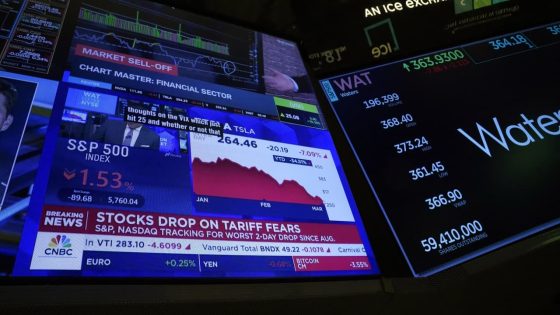Ethereum’s transaction fees have dropped by over 70% this week, a significant change that may influence network activity and investor behavior. As of February 16, 2025, Ethereum has been underperforming compared to Bitcoin and Solana, which have seen substantial gains over the past year.
- Ethereum underperforms compared to Bitcoin and Solana.
- Transaction fees dropped over 70% recently.
- Sharp decline in ETH exchange reserves noted.
- Historical trends suggest potential price rallies.
- Technical indicators show lack of bullish momentum.
- ETH needs to break $2,800 for upward movement.
This week, Ethereum’s transaction fees fell dramatically, dropping from $23 million to $7.5 million. This reduction follows an increase in the gas limit, which has enhanced block capacity and reduced network congestion. Historically, lower fees have led to increased network usage, as seen during previous declines in 2021 and mid-2023 when daily active addresses surged.
Currently, Ethereum’s exchange reserves have also seen a sharp decline, falling from 19.7 million ETH to 18.8 million ETH in just ten days. This trend indicates that investors are moving their assets into self-custody, which could lead to a supply squeeze if demand rebounds. Historically, such reductions in exchange reserves have often preceded price rallies, suggesting a potential for increased prices if current Trends continue.
Despite these positive indicators, Ethereum remains down 1.1% year-over-year, lagging behind Bitcoin’s 89.6% and Solana’s 68.7% gains. Technical analysis shows strong resistance around the $2,800 mark, with the Relative Strength Index (RSI) at 39.34, indicating a lack of bullish momentum. For Ethereum to break out, it will need to surpass the $2,800-$2,900 range with increasing trading volume.
In summary, Ethereum’s recent drop in transaction fees and exchange reserves may indicate a shift in market dynamics. While historical patterns suggest potential for renewed activity, the current lack of bullish momentum and resistance levels will be critical factors to monitor in the coming weeks.










![Will Avalanche [AVAX] crash deeper? Why $14.5 support is bears' new target](https://news.faharas.net/wp-content/uploads/2025/03/Will-Avalanche-AVAX-Plunge-Further-Bears-Set-Sights-on-145.webp-560x315.webp)





















